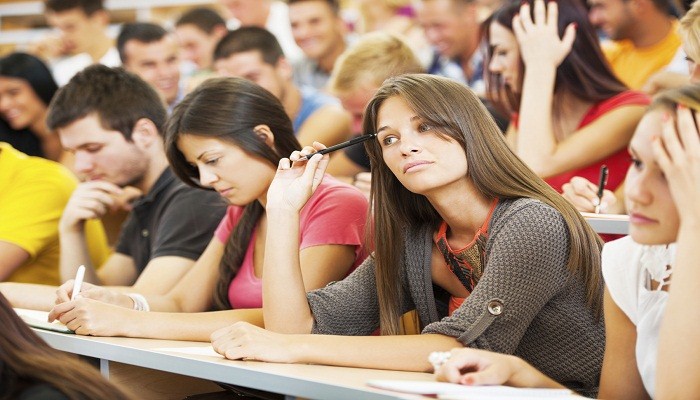Every classroom teacher must strive to use all available means to promote diversity, equality, and inclusion, as the students under their care are members of the larger society who will go on to implement this knowledge. Every student is entitled to quality education in an inclusive and nurturing environment to help them reach their full potential. Many students leave school for successful careers but are still not self-confident. This article explores the concept of diversity, equality, and inclusion and shows the crucial role teaching and teachers play in inculcating these three features in learning.
What is equality?
Equality is a concept that advocates for fair treatment and equal opportunities for all. A society that promotes equality creates room for as many qualified people as possible. It does not discriminate based on race, ethnicity, or religion. Equality ensures a peaceful society to a great deal since citizens see themselves as partners instead of rivals.
What is diversity?
Diversity means acknowledging our differences and respecting them. This plays out in multicultural societies where there are people from all walks of life. Diversity does not change the fact that we are all human and have the same blood running through our veins.
What is inclusion?
Inclusion unites both parameters. It means that everyone is encouraged to retain their uniqueness in a multicultural society. No one is singled out for being different or belonging to a certain social or religious class.
How teaching can promote diversity, equality, and inclusion
It is important to have a diverse and inclusive online and offline classroom. These seven tips are helpful:
- Re-evaluate teaching materials
Some teaching materials are one-sided because their creators had a narrow view of life, however, a single class may contain a mix of ethnicities. Modifying the curriculum to speak in a range of voices can help cover the various groups represented in the class.
Better still, the school board could tweak the curriculum to be all-inclusive. Teachers could promote literature from authors of color and examine historical voices to identify missing areas. If lectures target only one narrative, rivalry may start brewing in the class. Another creative way to get different people to collaborate in class is to organize them in groups and give them a project to implement. It does not have to be about the course studied, but something challenging. It may be difficult to overhaul the curriculum, but it is still possible for teachers to ask students for their perspectives on a given topic and challenge them to apply critical thinking.
- Teachers should get to know students
Every student in school is unique. With the advent of online learning, students worldwide can enroll in a course. Therefore, a single class will have diverse perspectives on certain issues. One way teachers can balance this is by learning about their students. Where do they come from? What kind of socio-economic situation do they live in? How well do they get along with their peers? What is their academic standing?
When teachers have these details, building relationships with students is easier. One way for teachers to understand students deeper is to schedule a ‘get-to-know-me’ meeting. Let the students know the teacher and understand that they can approach them if they experience any challenges. After they are comfortable, the teacher can communicate the school’s vision and goals to them. Good teachers also help students understand their strengths and weaknesses to help them build a safe and secure learning environment for them to thrive.
- Address inequality
Inequality exists in every society, but the ability of key players to curtail it to the barest minimum makes a difference. A crucial part of supporting diversity in the classroom is creating a safe space for students to discuss how issues like discrimination affect them. When issues of inequality are raised, teachers should not hesitate to address them.
In fact, they should lead the conversation and inspire the school management to act. Conversations should not be limited to words alone. Teachers should use language that promotes positivity and does not increase tension in the classroom setting. If teachers pick a side when issues are brought to the table, this indicates that they are for one party, not everyone. Teachers should encourage students to unite if they notice division around them. This is one way that teachers can improve teaching methods.
- Connect with families
Teachers in middle and high school can connect with families and communicate their goals for diversity with them. Schools comprise students from various families coming together to form a mini-society. During general meetings, teachers should also ask parents if they have concerns. It is important to listen to them while paying attention to their concerns.
School management can go a step further to reach out to leaders in the community to offer diverse perspectives on an issue, either as professionals, activists, or community workers. Schools can create programs that allow students to meet community members from different backgrounds. It becomes even more impactful if these people are successful in their chosen careers. This can inspire students to become a better version of themselves.
- Meet diverse learning needs
There are no uniform standards in a diverse classroom. Teachers are encouraged to imbibe diverse approaches for students with different learning needs. This sounds challenging, but it is workable. Introducing adaptive technologies makes learning accessible for all students. These technologies include talking calculators for students with dyscalculia or modified computer accessories for students with physical disabilities.
Teachers should also learn to use different teaching and instructional techniques such as blended learning, differentiated instruction, and project-based learning to create opportunities for all students to contribute. Ambitious teachers can explore various educational careers to help them become better versions of themselves. These career paths help aspiring leaders become more skilled, passionate, and qualified. Educational leaders can also train students, family members, and other professionals in major areas of personal and professional life. The best part of this upgrade is the job security and potential for higher pay.
- Hire diversity
According to federal data, 81.6% of teachers in the US are white, while just 6.8% are black. In contrast, 47% of students are white, and 16% are black. Another study from the Learning Policy Institute shows that having teachers of color increased the academic performance of the minority. School leaders can impact the diversity of their faculty through a deliberate recruitment effort.
One way to bring this to life is to recruit teachers from non-traditional programs. Leaders can monitor diverse hiring efforts and reward teachers that meet diversity requirements. More schools will see the need to follow suit when diversity is incentivized. While schools are encouraged to hire diverse professionals in the workforce, it is very important that emphasis should be placed on hiring the best candidates for the position. At the same time, the recruiting team must work on their bias and assumptions about what makes a person qualified for the position. A diverse teacher in the classroom exposes students to different styles and ideas to produce better results.
- Support professional development opportunities
There’s a limit to what teachers can do. As much as they invest their time in the classroom to promote diversity, they have little or no influence on what happens outside. However, professional development resources can help students respond to challenges outside the school environment. Schools are encouraged to organize professional development sessions illustrating how structural inequality affects the larger society. Such programs also help students develop voices of their own. Professional development courses are available for both teachers and students. When both groups are equipped with knowledge, they can have a unique voice that confronts societal biases.
Negative effects of inequality in education
Inequality is a situation of unequal and unjust distribution of resources. It means unequal opportunities among members of a particular society. In this context, it affects students. Debates around inequality center around social justice, moral ethics, and equity. When students are aware of their unequal status, it negatively affects them and the education system. Here are some negative effects of inequality in education.
- It leads to unhealthy competition
Another reason inequality must be avoided in the school environment is that it creates rivalries. When a certain group gets all the attention and privilege, the underprivileged students may start feeling jealous. They may begin to do all they can to impress teachers and prove that they are better. If care is not taken, unhealthy competition gradually becomes the order of the day, and this continues until management intervenes. The class then becomes uncomfortable for both teachers and students.
- It leads to discrimination
When students feel less appreciated than their peers, they begin distancing themselves and become more reserved. They will associate with others in the same shoes as them while developing a hatred for the other party. Although they may be in the same class, they feel inferior and consider others superior. The teacher may not notice this behavior until it is too late. However, when this is detected early, students can learn to coexist despite their diversity.
Three major causes of inequality in the education system
Teachers or school management are not the cause of inequality in schools. However, they play a crucial role in equalizing opportunities. The following are major causes of educational inequalities.
- Religious beliefs
Religion can play a huge role in inequality. Sometimes, it creates a disconnect between formal and informal education. Some religions limit the acquisition of certain knowledge. Others force adherents to disregard formal education. In some countries in Africa, formal education is predominantly delivered by Christians. This means that Muslims in those localities have limited access to formal education.
- The gender factor
Gender plays a crucial role in educational inequalities. While female enrolment in higher education has tripled globally between 1995 and 2018, there is a dearth of women at the top. Although they are represented among teaching staff at lower education levels, this figure drops at higher levels. With more men occupying educational positions, women may feel stifled and uninterested in the field. Hopefully, the gospel of gender equality is louder and more women live to their full potentials.
- The disability component
The issue of disability and how it affects education has been neglected by many governments. Often, the needs of disabled students are not considered when drafting educational policies. These students struggle with limited resources and little or no support. Thankfully, organizations are waking up to the responsibility of reminding the government of how best to assist these students. Teachers working in a diverse class consisting of disabled and able-bodied students must understand their needs while providing them with appropriate educational opportunities.
Teachers and school management play a huge role in promoting diversity, equality, and inclusion. It starts with being conscious of the school environment and treating students equally. Teachers should notice the interaction between students and intervene when there is friction among students. Everyone, regardless of their social class, religion, or background, deserves all-inclusive learning.










